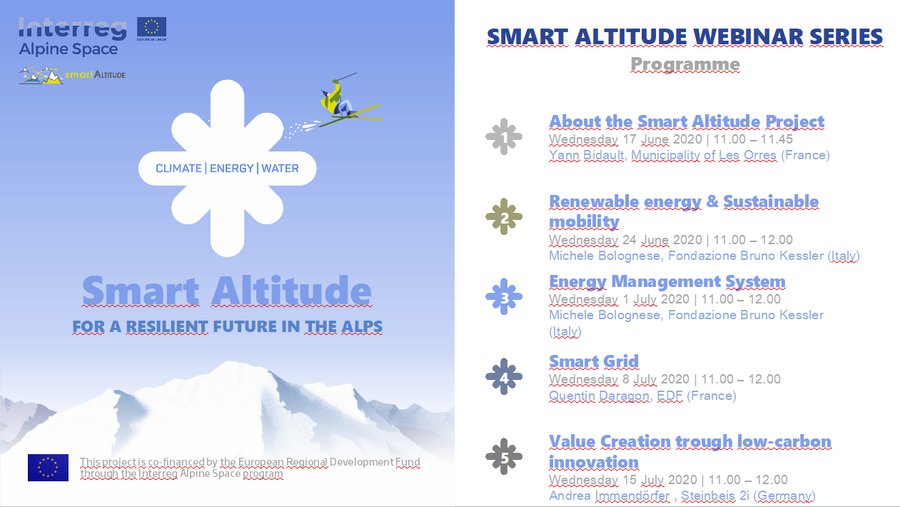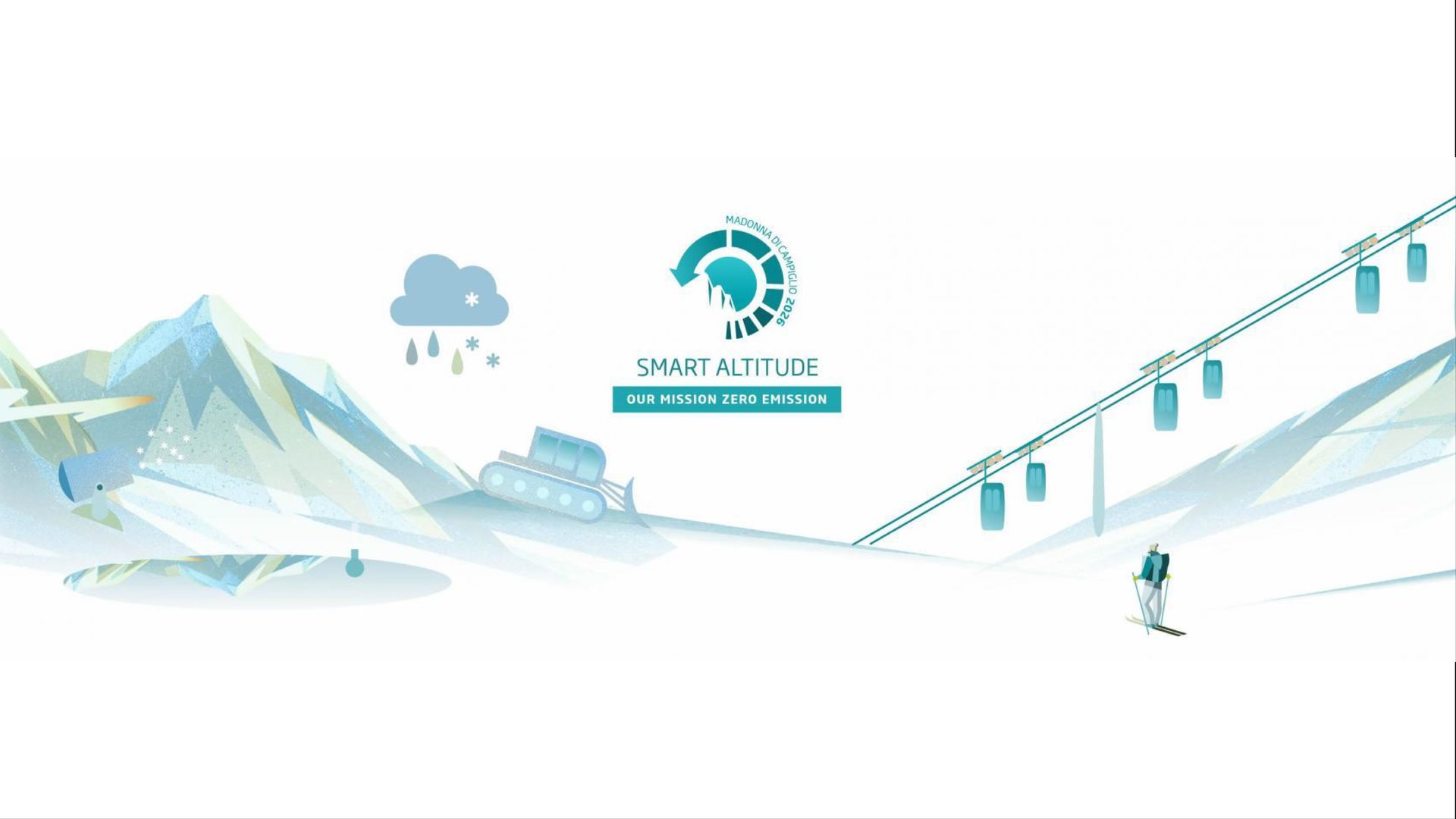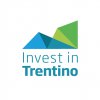
SMART ALTITUDE: OUR MISSION, ZERO EMISSION
The Smart Altitude project, co-financed by the European Union via Interreg Alpîne Space, brings together 11 partners from 6 Alpine countries: the resorts of Madonna di Campiglio (Trentino) in Italy, Krvavec in Slovenia, Verbier in Switzerland and Les Orres in France, with industrial, development support or R&D partners such as EDF, Trentino Sviluppo, the Bruno Kessler Foundation, the University of Milan, CREM, Seinbeis 2i, BSC Kranj, ÖAW/IGF.
All these actors are working together to develop tools to promote good practices, efficient energy solutions, and facilitate their deployment in a collective approach adaptable to local constraints and deployable on the scale of the Alpine arc.
SMART ALTITUDE: A SERIES OF WEBINARS
Smart Altitude launches a series of 5 webinars focused on the main themes that characterize the project, with the involvment of the Fondazione Bruno Kessler in the workshops dedicated to "renewable energy & sustainable mobilily" and "Energy Management System".

The first webinar presents the Smart Altitude Project and the six-steps approach for dealing with climate change in Alpine ski resorts. Adaptation and mitigation strategies will be discussed. The Smart Altitude Online toolkit will be presented as a main resource for guiding ski-resort operators and local policy-makers in developing low-carbon measures

The second webinar offers an overview of the integration of renewable energy and sustainable mobility in Alpine ski areas. The first part presents the different renewable energy systems (RES), focusing on solar (thermal and PV), wind, hydroelectric, geometric and biomass conversion methods. Alternative methods to artificial snow production using RES are described. The second part discusses energy storage systems (ESS) as integrators between energy demand and renewable energy production. The final part focuses on transport facilities, particularly on recharge and refueling infrastructure for battery electric vehicles (BEVs), plug in hybrid vehicles (PGEVs) and fuel cell electric vehicles (FCEVs). Finally, the use of these special vehicles in ski resort operations (e.g. electric snow-groomers) is presented.

The third webinar presents the necessary steps to consider for building an integrated energy monitoring system (IEMS) in a ski resort. The first part identifies the main components to be included in the IEMS such as ski lifts, artificial snow production systems, snow groomers activities and indoor space heating of a generic ski resort. The second part describes the sensors and communication systems to use for an adequate IEMS. An application/technology matrix and monitoring systems is presented. Finally, the example of the IEMS implemented in the living lab in Madonna di Campiglio is described.

The fourth webinar aims at presenting Smart Grid models for maximizing GHG reduction, economic impact and stakeholder benefits. The general characteristics of smart grids will be presented in the first part, focusing on participatory models that allow stakeholders to measure the economic and environmental impact of such technologies. The second part presents more in detail the technique of a smart grid. The examples of the Nice Grid & of Les Orres (France) will be used to explain the measures to take in order to implement a smart grid model.

The final webinar presents a short guide to creating value from low carbon innovation by introducing the most important aspects and tools to consider when a ski resorts wants to innovate. Tools such as PESTEL and SWOT will be presented in order to analyze the status quo of a ski resort and identify its innovation needs
To get more info on the Smart Altitude webinars and registration, please check smart-altitude.eu or write to infosmart-altitude@fbk.eu.






